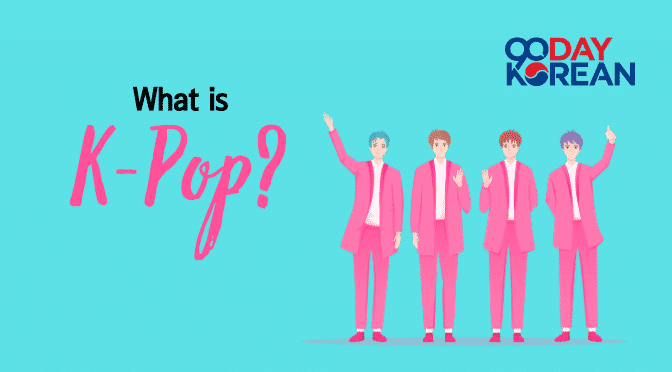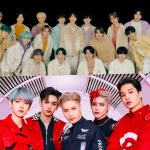These might be your questions when you’ve heard the term and would like to know more about why it’s becoming so popular.
Or perhaps you are curious about South Korea and want to learn more about the music.
This article will answer all the questions you have about K-pop, as well as explain everything you need to know related to this music phenomenon. Let’s get to it!
Below is a free PDF guide for “What is Kpop” that you can download and take with you:
Get “What is Kpop” Free PDF Guide
Contents [hide]
What does Kpop stand for?
Kpop stands for Korean popular music. It is most commonly known as K-pop which is mainstream music that originated in South Korea.
K-pop music in the country could be considered similar to Taylor Swift in the United States.
You may see Korean pop written as K-pop, K pop, Kpop, K-Pop, and KPOP.
What is Kpop music?
The term K-pop includes many different musical elements and genres under its umbrella. Along with Korean pop, it can also include Korean rock music, hip hop, and electronic music. K-pop is considered a fairly new form of music. The type of K-Pop music that you’re listening to today was formed around the 1990s.
The roots of K-pop began in the 1950s, however, and have since then already been influenced a lot by different types of Western music and pop groups. American pop music culture has especially had – and still does have – an effect on K-Pop.
What is Kpop in Korean?
Earlier, we learned Kpop means Korean popular music. However, Kpop in Korean is 대중음악 (daejungeumak). This term literally means pop music. But, this term can be a bit formal or literary, so many young people use 가요 (gayo) instead, which means song.
Kpop in Korean can also be called 대중가요 (daejunggayo).
What is Kpop in Hangeul?
K-pop in Hangeul is written as 케이팝 (keipap).
What are some distinctive features of K-pop?
A lot of different genres are used to create different K-pop music concepts. Just like how most K-pop groups have a designated rapper, and how English phrases are mixed into the song’s South Korean lyrics. This is said to have started by the South Korean-American idols, like Fly to the Sky, who wanted to showcase their English fluency in their music.

K-pop choreographies mostly rely on hard-hitting, synchronized movements, with members switching positions multiple times in a routine. This is a strategy called 자리바꿈 (jaribaggum), or “formation changing” in English.
The movements are also planned to be repetitive and addicting to look at, matching the concept of each song. The term for this is 포인트 안무 (pointeu anmu), or “point dance.” which made some dances and songs go especially viral.
For example, Psy’s “Gangnam Style,” Super Junior’s “Sorry Sorry,” INFINITE’s “Be Mine,” Brown Eyed Girls’ “Abracadabra,” and Blackpink’s “DDU DU DDU DU” all featured choreography that has made each song incredibly memorable. Apart from this, the groups’ or artists’ eye-catching outfits used in performances and music videos are equally important.
Kpop History – When did Kpop start?
Unlike other musical genres, contemporary K-pop start can be pinpointed to a certain date: April 11th of 1992, when the group Seo Taiji and Boys performed their music on TV for the first time.
What was the first Kpop group in Korea?
Seo Taiji and Boys is considered the first Kpop group in Korea as they are closely similar to the Kpop groups we have now. The group was active in the mid-1990s and was known for experimenting with different music genres. For example, they were the pioneers of integrating rap into K-pop.
This was the driving force that also led to the formation of all your favorite pop groups in the Korean music industry, with SM Entertainment being established in 1995, JYP Entertainment in 1997, and YG Entertainment in 1998.
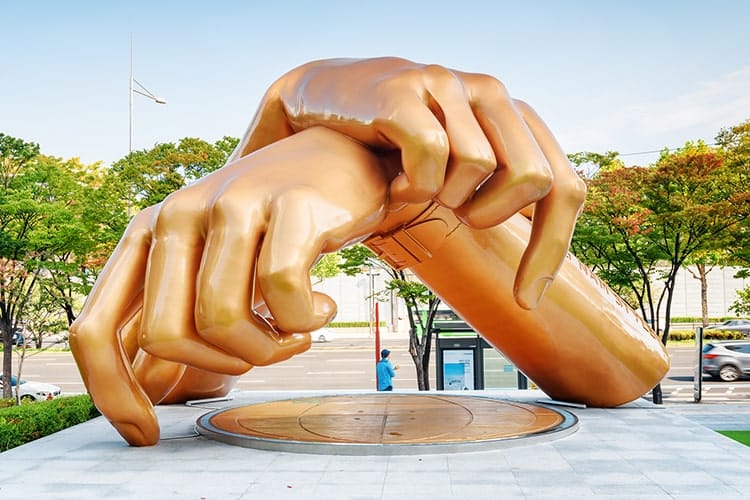
The very first group in K-Pop to exist was H.O.T., which debuted in 1996. The group has been credited as the group that started Korean pop culture, a formula that is still followed today. And with the emergence of BoA and TVXQ on the scene in 2003, the popularity of K-pop truly soared.
What is a K-pop idol?
K-pop idols are artists and groups formed by various entertainment companies creating catchy K-pop music and targeting younger audiences. The music groups are formed from a group of people who are all particularly talented in at least one of the following: singing, rapping, and dancing.
If you’re still completely new to Kpop music, then think of pop bands such as One Direction, Little Mix, and Fifth Harmony in the West: they’re close to the concept of idols!
These idols often enter the entertainment company in their teens and then train hard for years in areas like singing, rapping, dancing, and foreign language. Then, if they are lucky and talented enough, by the end of their teens, they will be picked for an idol group.

The K-pop groups then periodically come out with music singles and albums filled with catchy tunes. Every week they’ll go to many music shows to perform their lead single for a period of one month to two months. Although the song is important, special care and attention are always put into styling the group members, a well-synched choreography, and a high-quality music video.
This combination tells the story of the chosen style concept for each era. Some could say these entertainment companies work like manufacturers in assembling the perfect idol group outlook and style for each cycle of performing and promoting the music.
Popular Kpop Idols and Idol Groups
There are new South Korean pop idol groups debuting each month, and the public’s opinion on which group is the best changes accordingly. It is also typical for idol groups to make music and promote together for up to 10 years, then move on to other careers like becoming a solo artist or an actor.
However, some idol groups have been more successful and longer-lasting. Some groups are so famous that many different generations of K-pop listeners know them!
We’ve listed some of the most popular K-pop groups and artists, along with the most popular songs. You’ll find them in the sections below. These popular groups vary in their music genre, the number of group members, image, and generally, their style. But they all create quality music, dance, and performance.
Famous Kpop girl groups
Girls’ Generation is a great example of this. They have had a long career as the top girl group in K-pop, with incredibly catchy songs and concepts. For example, if you listen to the song “Gee!”, you’ll have it on repeat in your head for at least a full day!

Another huge girl group is Wonder Girls. They haven’t been as active as the Girls’ Generation, and they don’t have as many famous songs, either, but their hit song “Nobody” is one of the biggest K-pop songs ever made.
Girl Groups
- Twice (트와이스)
- Blackpink (블랙핑크)
- Red Velvet (레드벨벳)
- (G)I-DLE (아이들)
- MAMAMOO (마마무)
- Momoland (모모랜드)
- Girls’ Generation (소녀시대)
- Wonder Girls (원더걸스)
- 2NE1 (투애니원)
- T-ara (티아라)
- Kara (카라)
Famous Kpop boy groups
Among boy groups, the two most famous ones in South Korea have always been Dong Bang Shin Ki (also known as TVXQ) and Big Bang. Dong Bang Shin Ki once had the biggest fan club with K-pop fans in the world and is well known on the internet.
The Korean pop boy band Big Bang has a unique style that is easy to get hooked on, with their music evolving to something new with each album. Now they have paved the way for newer groups, but their style and music will not be forgotten for a long time.
And then there is one of the most popular groups of all time, BTS. This group has been an even bigger smash hit in the USA and other countries than it has been in South Korea.
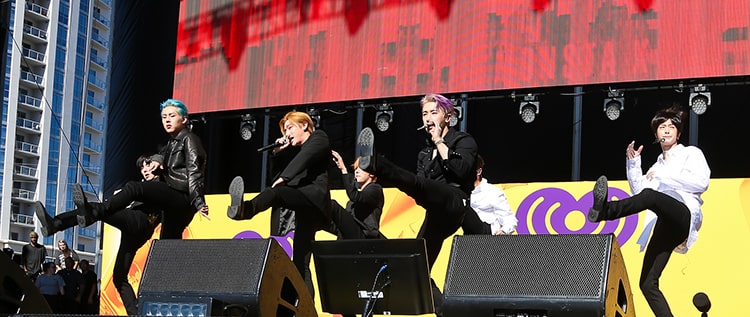
Boy Groups
- BTS (방탄소년단)
- iKon (아이콘)
- Seventeen (세븐틴)
- Got7 (갓세븐)
- NCT (엔시티)
- MONSTA X (몬스타엑스)
- Stray Kids (스트레이 키즈)
- Super Junior (슈퍼주니어)
- Shinee (샤이니)
- Big Bang (빅뱅)
- 2PM (투피엠)
- EXO (엑소)
- TVXQ (동방신기)
Famous K-pop artists
These K-pop artists either originally came from a girl or a boy pop group or created names for themselves as solo artists from the start. Either way, they have proved that they produce some of the best K-pop music there is!

Solo Artists
- Taeyeon (태연) of Girls’ Generation
- BoA (보아)
- IU (아이유)
- Taemin (태민) of Shinee
- Jay Park (박재범) of 2PM
Why is Korean Pop Music So Popular?
South Korean pop music has grown so popular since the early 2000s because of the internet and the evolution of social media. The more accessible South Korean music has become in the world, the more popular it becomes. Slowly, they appear not only on social media but in different countries’ local news and television shows.
K-pop’s characteristics which are synchronized dance moves, simple songs with addicting hooks, and the outer beauty of all of the K-pop groups’ members, contribute to this feat. Some of these idols are even popular in dramas as the OST’s singers and the star that played the characters themselves.
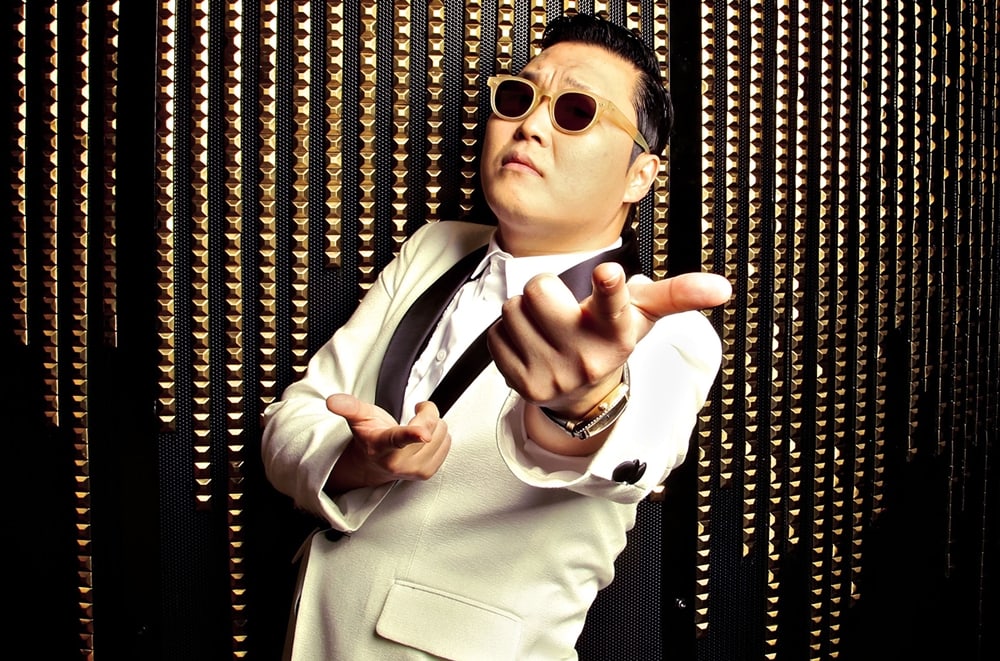
Each new K-pop group debuting, and each comeback (the K-pop group or solo artist coming out with new material), is hyped in the media, with a specific concept and hook to get the general population excited to consume the new music.
Additionally, it is more common for K-pop groups to do things for K-pop fans, like performing in music shows, throwing together fan signing events, attending variety shows, and even arranging more private fan meetings than it is for them to hold tours.
What are the most popular K-pop songs?
Below is a list of the top K-pop songs. We also have a separate article about K-pop songs for other song recommendations.
- Psy (싸이): Gangnam Style (강남스타일)
- Super Junior (슈퍼주니어): Sorry Sorry (쏘리 쏘리)
- Infinite (인피니트): Be Mine (내꺼하자 ㅣ naekkeohaja)
- Brown Eyed Girls (브라운 아이드 걸스): Abracadabra (아브라카다브라)
- Blackpink (블랙핑크): DDU DU DDU DU (뚜두뚜두)
- Big Bang (빅뱅): Lies (거짓말 ㅣ geojinmal)
- Exo (엑소): Monster
- BTS (방탄소년단): DNA, Boys With Luv
- Girls’ Generation (소녀시대): Gee
- Twice (트와이스): TT (티티)
- 2NE1 (투애니원): I Am the Best (내가 제일 잘 나가 ㅣ naega jeil jal naga)
- Wonder Girls (원더걸스): Nobody
- iKon (아이콘): Love Scenario (사랑을 했다 ㅣ sarangeul haetda)
How did K-pop become a worldwide phenomenon?
There have been various attempts by different music companies in South Korea to break into the international music markets, especially in the United States. The world only got to know K-pop when Psy’s “Gangnam Style” hit the radio all around the world in the summer of 2012.
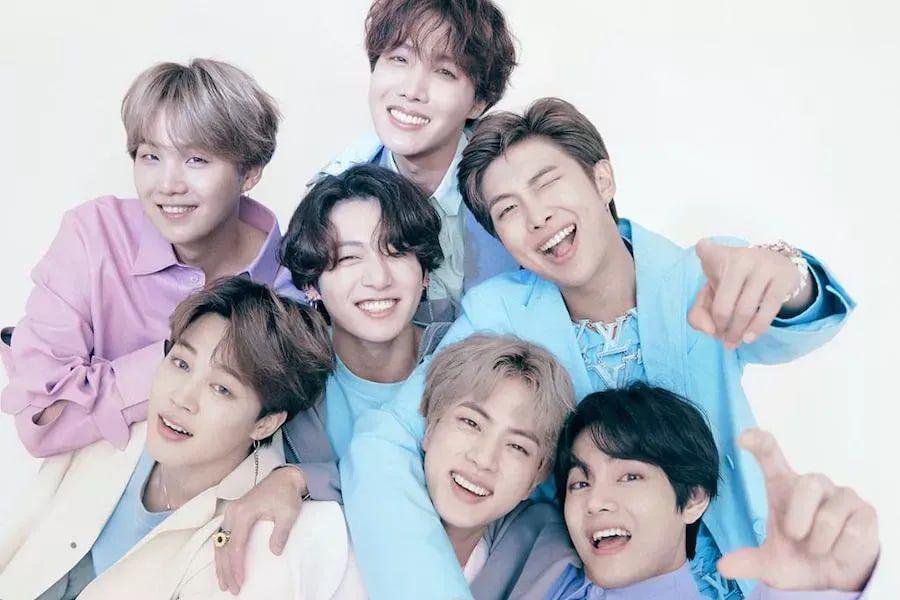
Many years ago, if you were lucky, you could maybe attend a small club concert by your favorite K-pop artists if you lived in Asia, Europe, or Brazil. But now you can also see groups like Blackpink perform their music at Coachella!
BTS
For a few years, K-pop popularity seemed like a fluke, but now that the world has gone crazy over BTS, we can finally call K-pop a worldwide phenomenon! This K-pop boy group was a big tool with which K-pop became a truly worldwide phenomenon after BTS became popular in the United States.
What does BTS stand for (Kpop Group)?
BTS stands for Bangtan Soneyondan, which translates to “Bulletproof Boy Scouts.” BTS is a seven-member boy group also called “Bangtan Boys” under the entertainment company Big Hit Entertainment.
Why is BTS so popular?
One of the many reasons why BTS has been explained to have become so popular is because of the message in their songs. Many find them more relatable than some other groups, as their music is more about bullying and mental health than love.
Also, these performers have used different tactics from different groups. Instead of relying on staying relevant by appearing on South Korean TV shows all the time, each group member has been active on social media to reach their audience all around the world.
This has eventually earned them awards and recognitions, including having the number 1 spot in the Hot 100 Chart on Billboard multiple times.
K-pop in Television
Some American TV shows and movies have also begun using Korean songs in their scenes. For example, the TV show Lucifer used the popular SHINee song “Lucifer” in one of their episodes. And there is a scene in the DC Comics blockbuster movie Justice League where Blackpink’s music was played.
Why is K-pop unique?
While K-pop music with its groups is quite different from western pop music especially, it’s easy to see why many people have become addicted to it now. The melodies are catchy, the choreographies are impressive, and the group members are beautiful to the eye.
There is usually a lot of effort also put into making the MVs look cool and high quality, even when it’s just the group members dancing. The groups have specific styles to help them stand out.

There is a special Korean slang term called 칼군무 (kalgunmu) which means “dancing perfectly in sync.” You can use this to describe your favorite K-pop performers.
The word 칼군무 (kalgunmu) is written in Hangul, the Korean Alphabet. If you don’t know how to read it yet, you can learn using this guide in about 1 hour.
What is the Hallyu Wave and how does it relate to K-pop?
Also called the Korean Wave, Hallyu Wave means the increased popularity of South Korean culture globally. This phenomenon began in the early 1990s.
K-pop is included as one part of the Hallyu Wave, but it also includes dramas, movies, and, more recently, Korean cosmetics. The Hallyu Wave first became popular in East Asia, but today you can see it impacting present cultures, music and film and television, and the interest and behavioral habits of people all around the world.
How to Become a K-pop Idol?
Typically, to become a K-pop idol or artist, you will have to train with an entertainment agency for years. Although you are expected to have talents in singing and dancing upon auditioning for the company, once accepted, you will spend several hours every day training those skills.
In addition, you will usually take classes in foreign languages, such as Japanese and English, and be taught other skills. For example, interviewing skills may be among the training programs you will undergo.
Usually, you’ll already become a trainee to a company when you’re still of school age, even before turning 18. During the training period and early on into your idol career, you are expected to live in a dormitory with the other trainees in the company.
How to Get into Kpop?
To get into K-pop yourself, a good place to start is by exploring the most popular and modern K-pop groups and artists. This way, you can find some new favorites, particularly the type of K-pop you like the most. Then, when you have identified that, you can find more groups with a similar sound!
For example, Spotify is a great tool for that, as it offers recommendations on each artist’s page. Here is a list of the best K-pop groups so that you can get started on your musical journey.
Wrap Up
If you enjoyed this, you may want to read about:
- Best KPop Groups of All Time
- Learn Korean with Kpop
- The Best Korean Dramas for Learning Korean
- Korean Drama Phrases
- Best Korean Movies for Learning Korean
Want more interesting Korean facts? Check out our article Facts About South Korea – 30 Interesting Things to Learn
Have you already listened to K-pop before? Let us know in the comments who your favorite idol and idol group are!
